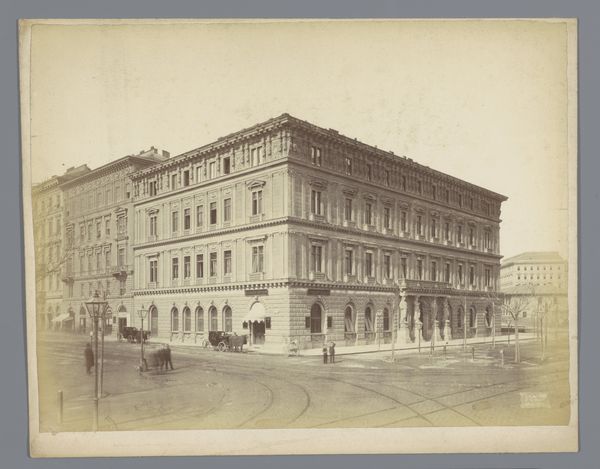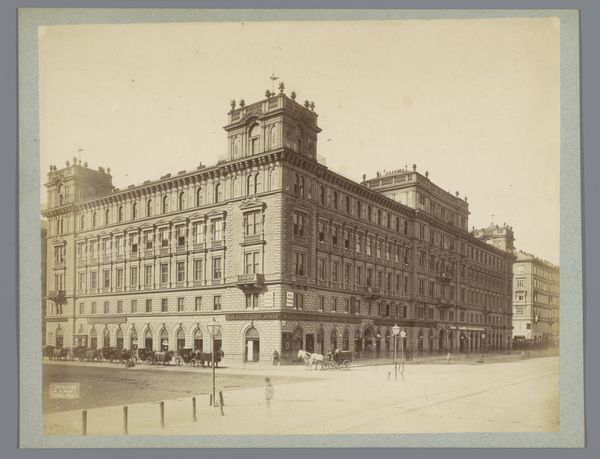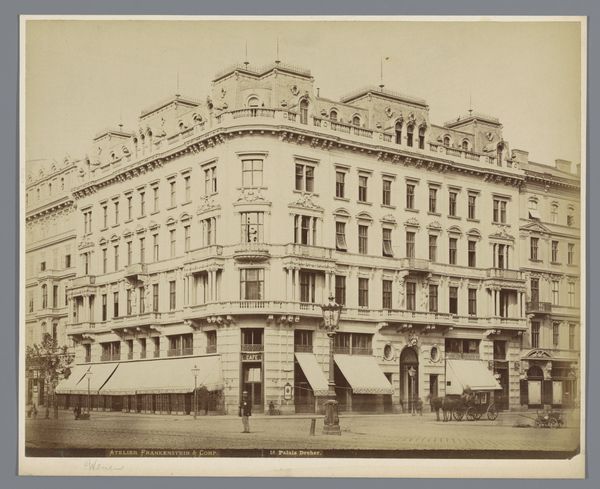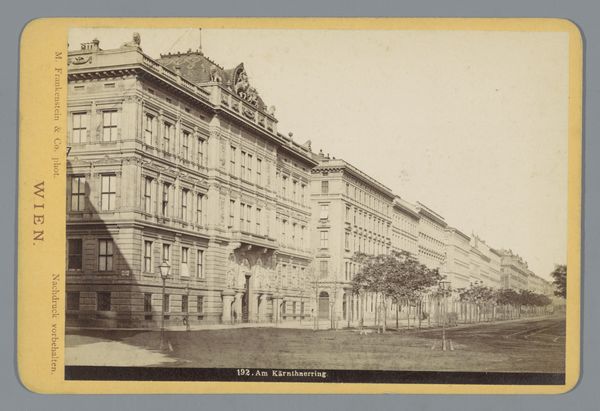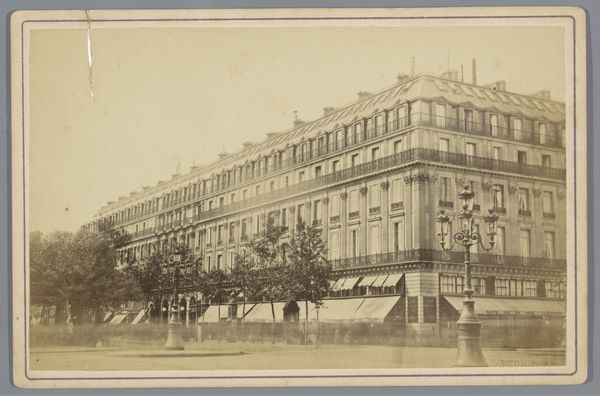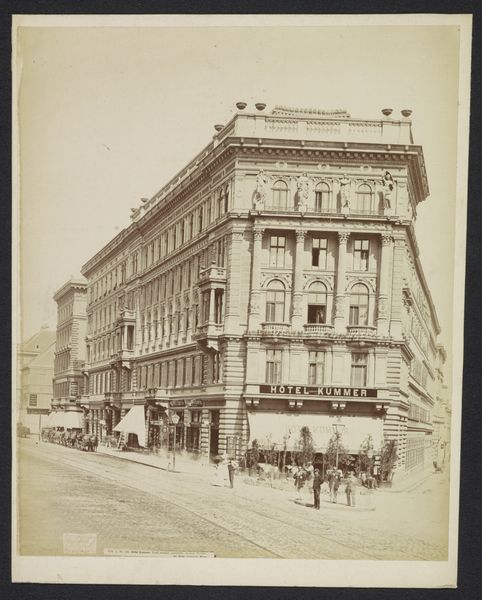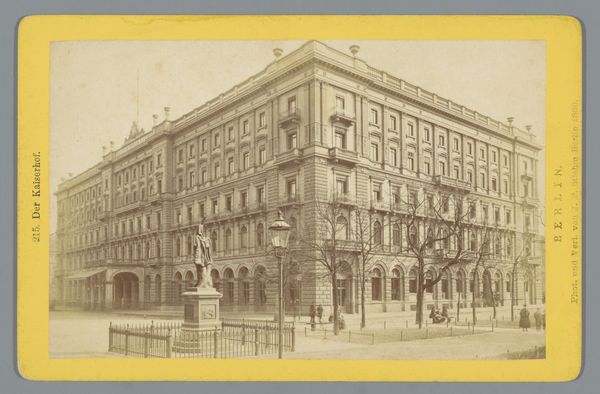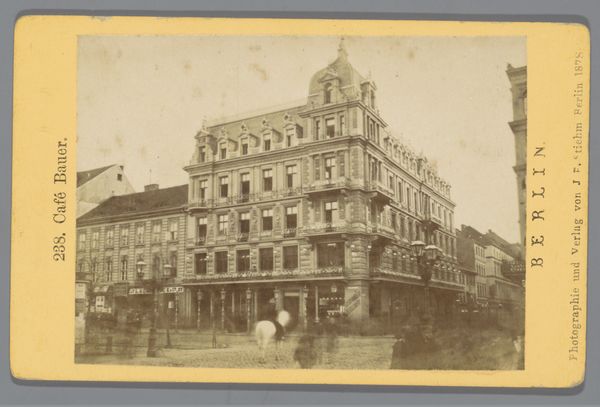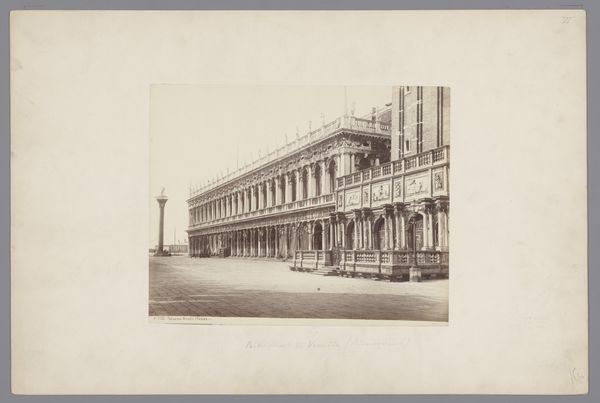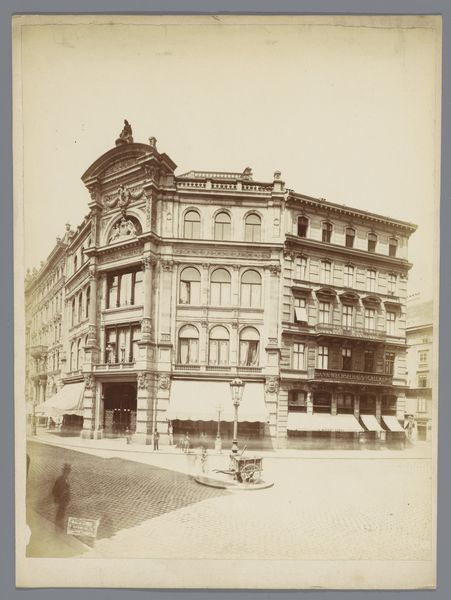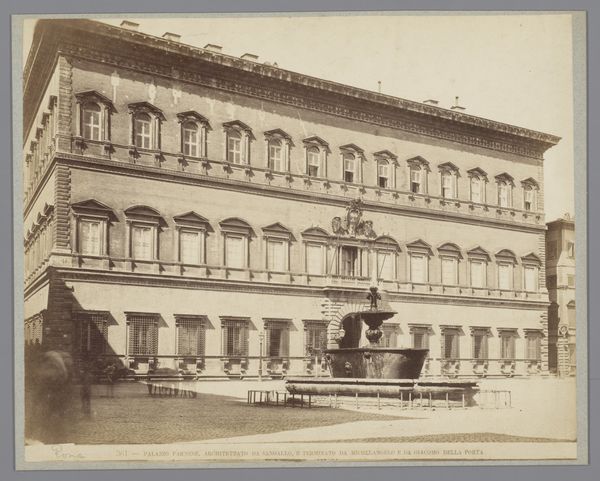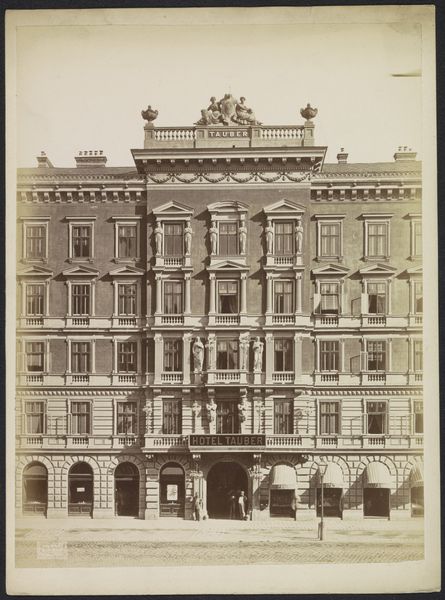
Dimensions: height 234 mm, width 281 mm
Copyright: Rijks Museum: Open Domain
Curator: Here we have an albumen print photograph entitled "Gezicht op het Palais Todesco te Wenen, Oostenrijk" by Hermann Heid, placing us in Vienna sometime between 1865 and 1891. Editor: It’s imposing, isn’t it? The sheer repetition of forms – those archways, windows, even the small statues up top – they create this… oppressive sense of order. Curator: Order certainly defines the Palais Todesco and the values it projects. As a Neoclassical building photographed in the late 19th century, it evokes a very deliberate return to the supposed clarity and civic virtues of ancient Greece and Rome. These forms imply solidity, permanence, a statement of power. Editor: The muted tonality reinforces that solidity. The gradations of light across the facade, though, give it depth. Look how the eye travels along the horizontal lines, drawn to the interplay of shadow and highlight, before being pulled upwards. It's carefully constructed visual choreography. Curator: Consider the cultural narrative here. The Palais Todesco would have represented more than just bricks and mortar. As home to a prominent banking family, it stood as a symbol of wealth, influence, and upward mobility within Viennese society. The Neoclassical style amplified that, lending the family an air of established legitimacy by linking them to powerful historical precedents. Editor: Precisely. And the symmetry underlines this quest for authority, right? That central arch, flanked by mirrored sections on either side. Even the placement of the figures, the street lamps… It’s all about establishing hierarchy and visual balance. Though one does feel the weight of the industrial era creeping in around the edges; new materials and commercial spaces jostling up against the aristocratic claims embedded in the Palais itself. Curator: Absolutely, there's a tension evident, a society navigating changing fortunes and values. It would have spoken to notions of national identity and historical memory and perhaps even the unease surrounding seismic societal shifts. Editor: It’s a testament to the power of composition and form that all that complexity simmers beneath the surface of such a seemingly straightforward cityscape. Curator: It reminds us how even a building, captured in a photograph, can act as a potent historical text and cultural symbol.
Comments
No comments
Be the first to comment and join the conversation on the ultimate creative platform.
